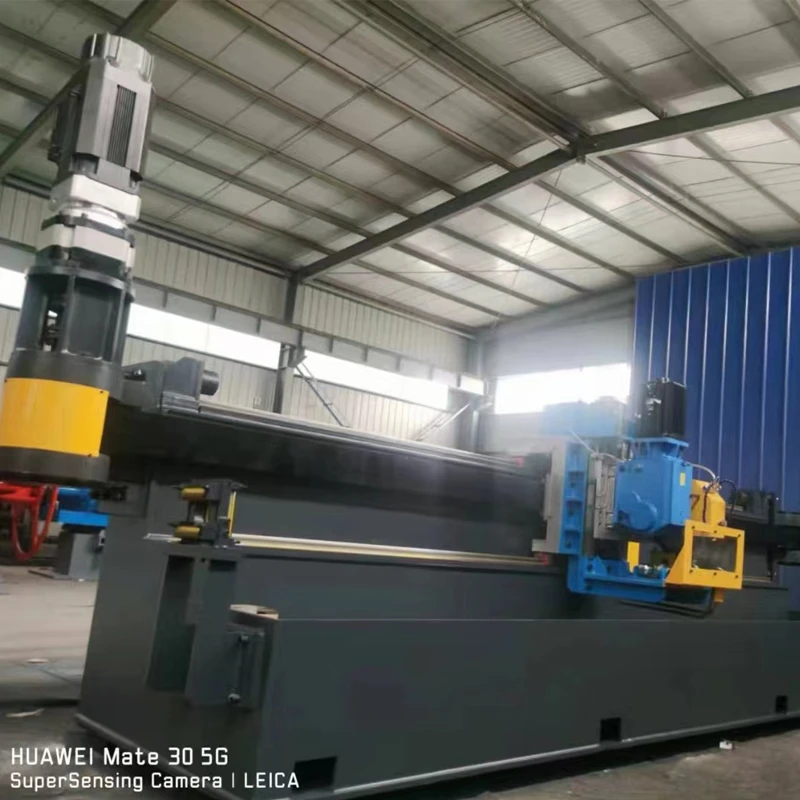roller straightening machine
The Role of Roller Straightening Machines in Modern Manufacturing
In the realm of modern manufacturing, precision and efficiency are paramount. One of the critical processes that ensure the quality of metal products is straightening. Among the various methods employed, roller straightening machines stand out due to their effectiveness and versatility. This article explores the working principles, advantages, and applications of roller straightening machines in contemporary manufacturing.
What is a Roller Straightening Machine?
A roller straightening machine is an automated device designed to straighten various metal materials, including bars, rods, and sheets. Unlike manual straightening methods, which can be time-consuming and labor-intensive, these machines utilize a series of rollers arranged strategically to apply controlled forces to deform and align materials to their intended specifications. By passing the material through this series of rollers, discrepancies in shape and alignment are corrected, resulting in a straightened product.
Working Principle
The operation of a roller straightening machine is based on the principles of bending and tension. The metal material is fed into the machine, where it encounters multiple rollers. These rollers are positioned in such a way that they can exert different amounts of pressure at various points along the material. This configuration allows for selective bending areas that are out of alignment can be bent back into a straight form while minimizing stress in other regions.
The adjustment of roller spacing and pressure is critical. Operators can fine-tune these parameters to achieve the desired straightness without compromising the integrity of the material. Modern machines often feature digital controls, allowing for precise settings and consistency in production.
Advantages of Roller Straightening Machines
1. Increased Efficiency Roller straightening machines significantly reduce the time required for straightening metal products. Their automated nature allows for high throughput, making them suitable for large-scale manufacturing operations.
roller straightening machine

2. Consistency and Precision With automated controls, these machines provide consistent results with minimal variation. This precision is crucial for industries where dimensional tolerances are critical, such as aerospace and automotive manufacturing.
3. Reduction in Material Waste By accurately straightening materials, roller straightening machines help minimize waste. This is achieved by avoiding the need for additional cutting or resizing of poorly shaped materials.
4. Versatility Roller straightening machines can handle a wide range of materials and sizes, making them versatile tools in various industries. Whether dealing with thin sheets or thick bars, these machines can be calibrated to meet diverse requirements.
5. Less Labor Intensive As automation increases, reliance on manual labor decreases. This not only lowers labor costs but also reduces the potential for human error, further enhancing product quality.
Applications in Various Industries
The applications of roller straightening machines are vast and varied. They are extensively used in the construction industry to prepare steel beams and reinforcement bars. The automotive sector employs these machines to ensure the precision of components, which is essential for safety and performance. In manufacturing electrical wires and cabling, straightening ensures that the materials fit seamlessly into assembly processes.
Additionally, industries involving springs, tubes, and rods benefit enormously from the technological advancements in roller straightening. The ability to produce straightened materials consistently allows for smoother operations in downstream manufacturing processes.
Conclusion
In conclusion, roller straightening machines play a vital role in the efficiency and quality of modern manufacturing. Their operational efficiency, precision, and versatility make them indispensable tools in various industries. As technology continues to advance, these machines will likely evolve further, enhancing their capabilities and promoting innovation in metal processing. The future of manufacturing undeniably leans toward automation, and roller straightening machines are at the forefront of this transformation.
-
High Frequency Straight Seam Welded Pipe Production Line-BzZhou Xinghua Machinery Equipment Manufacturing Co., LTD.|line pipe steel&welded gas pipeNewsJul.30,2025
-
High Frequency Straight Seam Welded Pipe Production Line-BzZhou Xinghua Machinery Equipment Manufacturing Co., LTD.|High Precision&Automated SolutionsNewsJul.30,2025
-
High Frequency Straight Seam Welded Pipe Production Line - BzZhou Xinghua Machinery Equipment Manufacturing Co., Ltd.NewsJul.30,2025
-
High Frequency Straight Seam Welded Pipe Production Line-BzZhou Xinghua Machinery Equipment Manufacturing Co., LTD.|Precision Welding, High EfficiencyNewsJul.30,2025
-
High Frequency Straight Seam Welded Pipe Production Line|BzZhou Xinghua|Precision Welding&EfficiencyNewsJul.30,2025
-
High Frequency Straight Seam Welded Pipe Production Line - BzZhou Xinghua|Precision Engineering&EfficiencyNewsJul.30,2025


